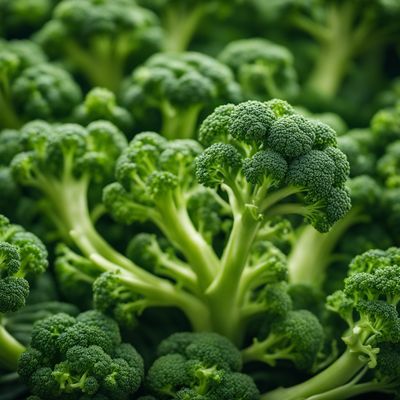
Ingredient
Choi sum
The Tender Green Delight
Choi sum features long, slender stems with dark green leaves and small yellow flowers. It has a tender texture and a mild, slightly bitter taste. This versatile vegetable can be stir-fried, steamed, or used in soups and salads, adding a refreshing and vibrant element to dishes.
Origins and history
Choi sum originated in China and has been cultivated for centuries. It is commonly used in Cantonese cuisine and is a staple in many Chinese households. The vegetable gained popularity in other Asian countries, such as Thailand and Malaysia, where it is also incorporated into traditional dishes.
Nutritional information
Choi sum is low in calories and a good source of vitamins A, C, and K. It also provides essential minerals like calcium and iron.
Allergens
There are no known allergens associated with choi sum.
How to select
When selecting choi sum, look for fresh, vibrant leaves and firm stems. Avoid any wilted or discolored leaves. The stems should be crisp and not too thick. Additionally, choose smaller choi sum for a more tender texture.
Storage recommendations
To maintain freshness, store choi sum in the refrigerator. Wrap the stems in a damp paper towel and place them in a plastic bag or container. It is best consumed within a few days of purchase.
How to produce
Choi sum can be grown in a home garden by sowing seeds in well-drained soil and providing regular watering. It thrives in cooler temperatures and can be harvested when the leaves are young and tender, usually within 40-50 days of planting.
Preparation tips
Choi sum can be stir-fried with garlic and oyster sauce, steamed and served with a drizzle of soy sauce, or added to soups and noodle dishes. The tender leaves can also be used raw in salads for a refreshing crunch.
Culinary uses
Choi sum is commonly used in Cantonese cuisine, particularly in stir-fries and soups. It is also a popular ingredient in Thai and Malaysian dishes.
Availability
Choi sum is commonly available in Asian grocery stores and supermarkets. It is cultivated in China, Thailand, Malaysia, and other Asian countries.


